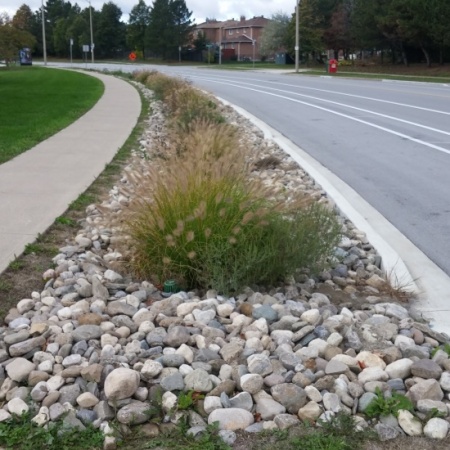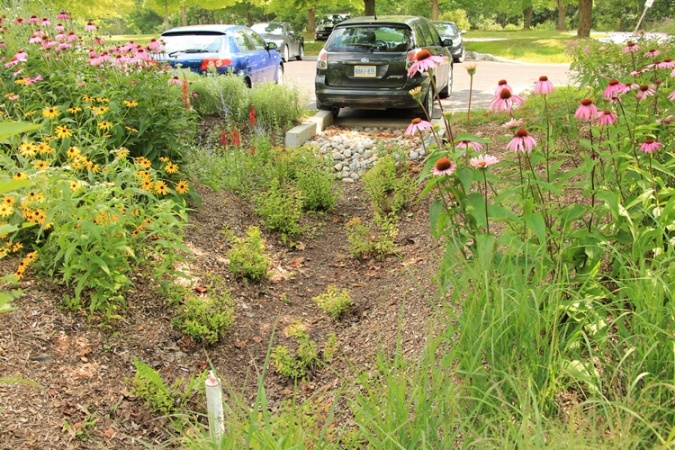Difference between revisions of "Swales"
Jenny Hill (talk | contribs) |
Jenny Hill (talk | contribs) |
||
| Line 1: | Line 1: | ||
| − | This article is about planted installations designed to capture <strong>and convey</strong> surface runoff through an engineered soil with subterranean infrastructure. | + | This article is about planted installations designed to capture <strong>and convey</strong> surface runoff through an engineered soil with subterranean infrastructure. <br> |
For node type systems, see [[Bioretention Cells]]. | For node type systems, see [[Bioretention Cells]]. | ||
<div class="col-md-8"> | <div class="col-md-8"> | ||
| Line 8: | Line 8: | ||
They are sometimes referred to as 'dry swales', 'vegetated swales', 'water quality swales' or 'inline bioretention'. | They are sometimes referred to as 'dry swales', 'vegetated swales', 'water quality swales' or 'inline bioretention'. | ||
</p> | </p> | ||
| − | |||
{{TextBox|1=Bioswales are an ideal technology for: | {{TextBox|1=Bioswales are an ideal technology for: | ||
Revision as of 16:47, 22 June 2017
This article is about planted installations designed to capture and convey surface runoff through an engineered soil with subterranean infrastructure.
For node type systems, see Bioretention Cells.
Overview[edit]
Bioswales are linear landscape features consisting of a drainage channel with gently sloping sides. Underground they are filled with engineered soil and a water storage layer of coarse gravel material.
They are sometimes referred to as 'dry swales', 'vegetated swales', 'water quality swales' or 'inline bioretention'.
Bioswales are an ideal technology for:
- Sites with long linear landscaped areas, such as parking lots
- Connecting with one or more other types of LID
The fundamental components of a bioretention cell are:
- Biomedia - an engineered soil mix
- Planting
- Underdrain with clean out and inspection ports
Additional components may include:
- Impermeable membrane to prevent infiltration to soils below
- Check dams
Planning Considerations[edit]
Planning Content
Design[edit]
Design Content
<panelSuccess>
</panelSuccess>
Performance[edit]
Performance Content
Incentives and Credits[edit]
In Ontario
City of Mississauga
The City of Mississauga has a stormwater management credit program which includes RWH as one of their recommended site strategies[1].
LEED BD + C v. 4
SITES v.2
See Also[edit]
External Links[edit]
| SEND US YOUR QUESTIONS & FEEDBACK ABOUT THIS PAGE |

